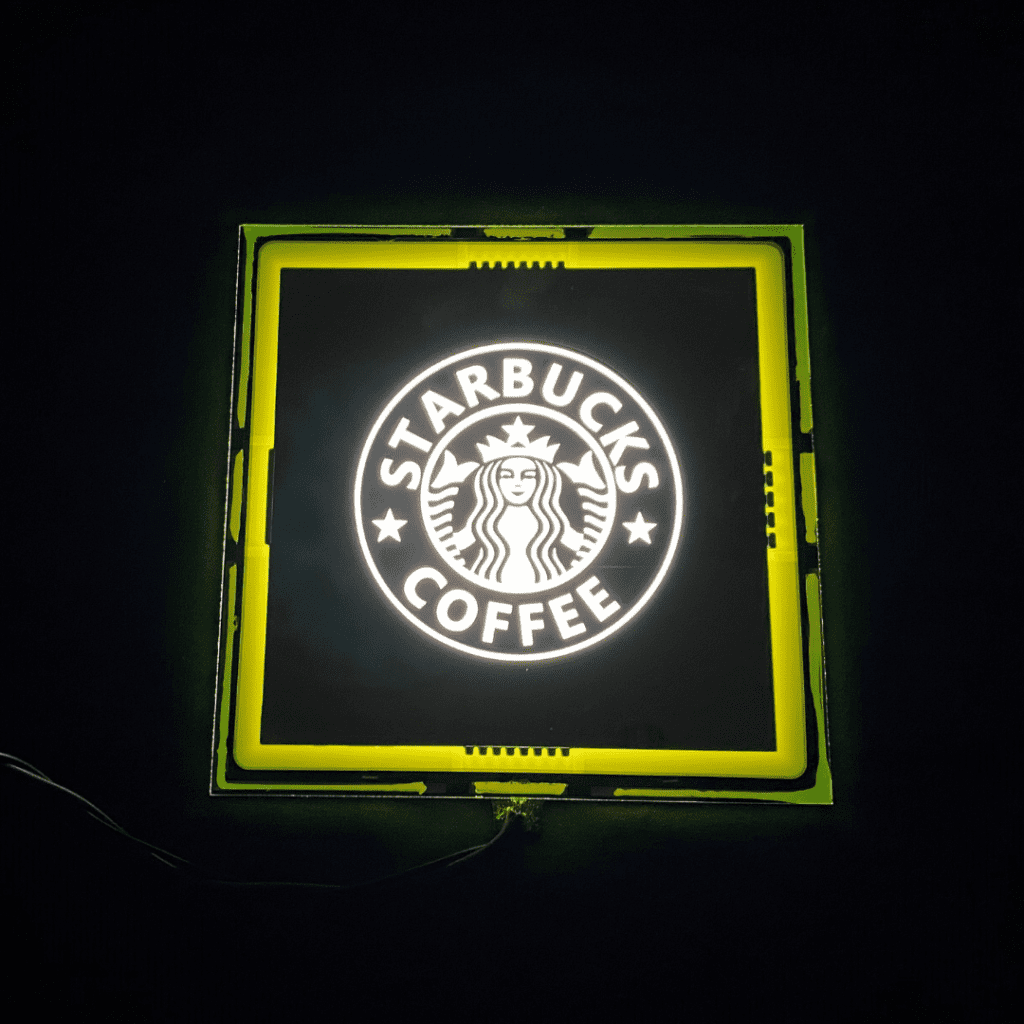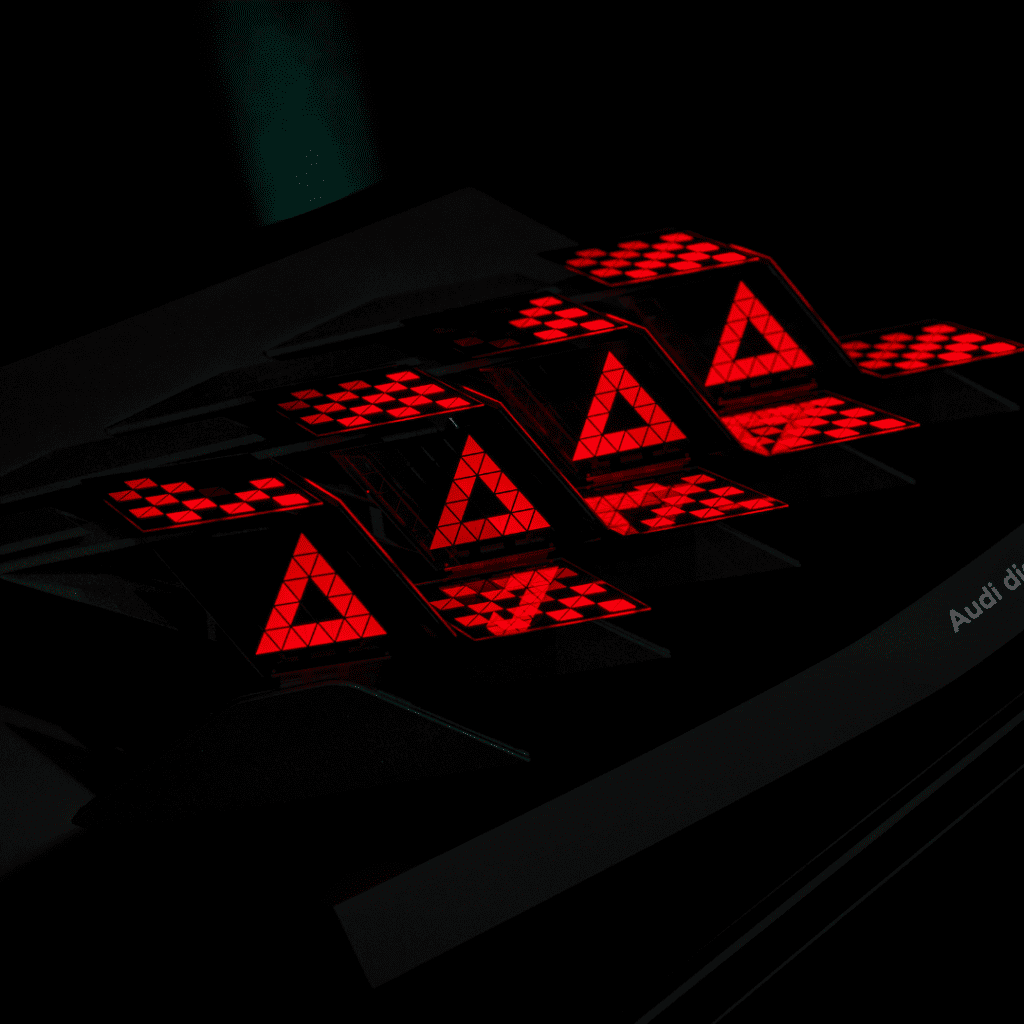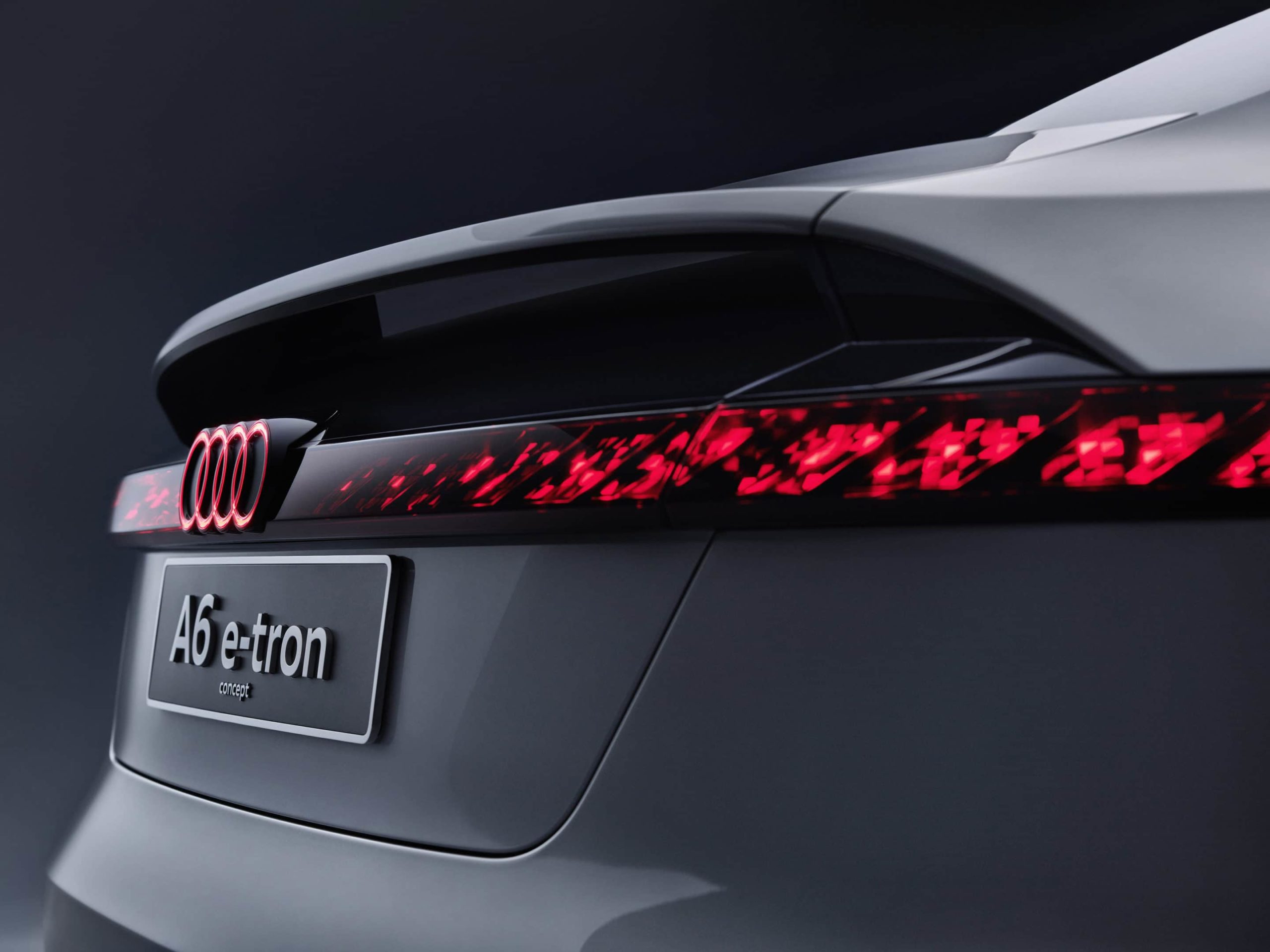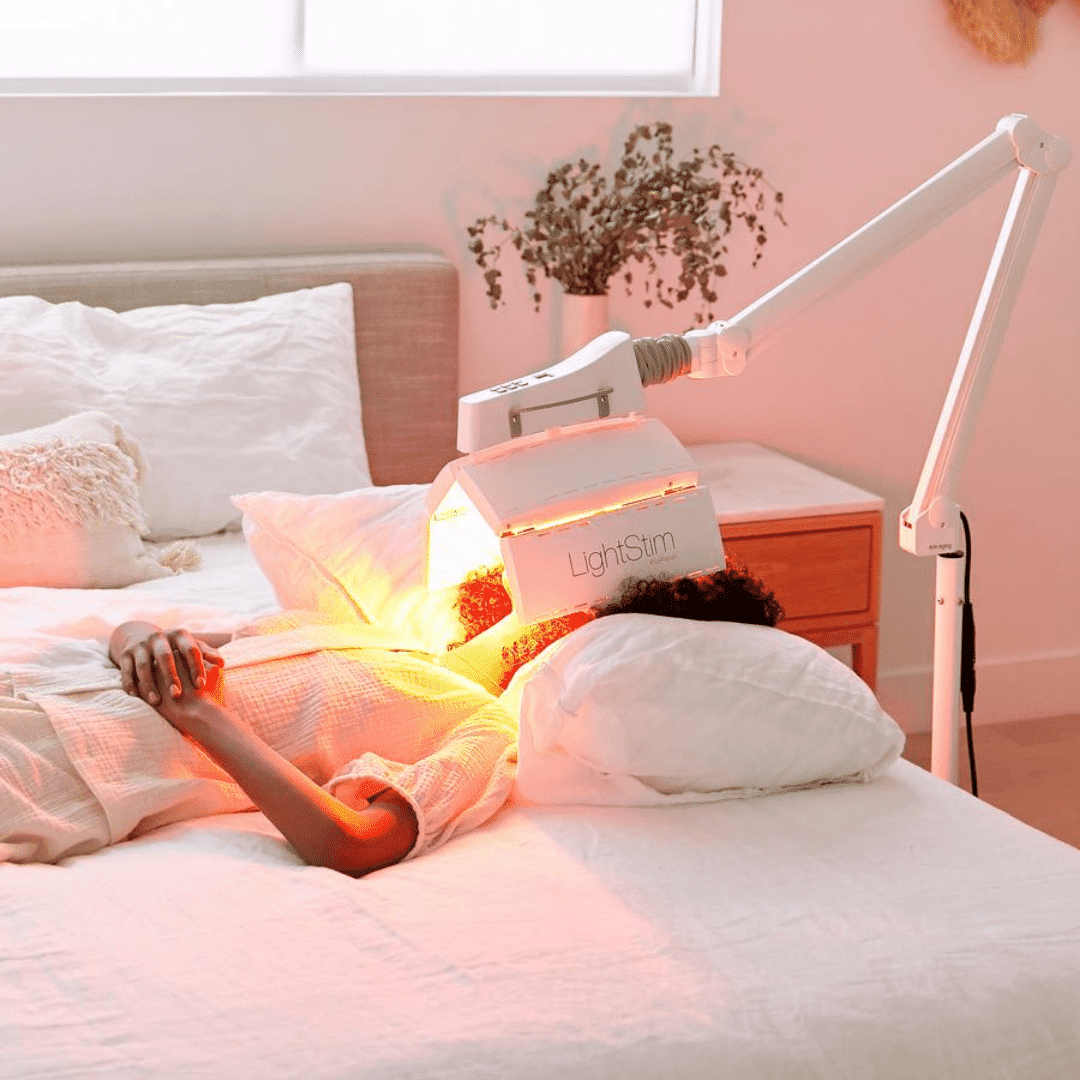Automotive Interiors – Choose OLEDs for a More Comfortable, Personalized Ride
By Dr. Kathleen Vaeth, Director of OLED User Experience, OLEDWorks
Interior automotive lighting has transformed in recent years, evolving in form, function, and how it interacts with the driver and passengers. As instrument panels have progressed from illuminated, backlit, or glow-in-the-dark dials to digital screens, and users have moved to electronic displays for maps and other reading material, automotive interior illumination requirements have shifted.
These shifts, combined with advances in lighting technology, allow for new design approaches capable of increasing driver comfort and safety while also expanding opportunities for personalization and the incorporation of a greater sense of pride in car ownership. Here, I will discuss some of these trends and how OLED technology fits into this transformation of automotive interior lighting.
Ambient Lighting and Safety
Studies have shown that ambient interior vehicle lighting can play a key role in driver alertness and performance.1 Well-designed, low glare lighting systems enhance the driver’s sense of space and orientation in the vehicle and can make tasks such as locating and adjusting controls more intuitive. This helps keep the driver focused on the road and improves overall safety.
Historically, there were only a handful of lighting elements in the car interior that targeted specific, task-oriented functions. As lighting technology has become more compact, this has expanded to include the vehicle doors, dashboard, center console, gear sticks, and floor area, with more locations expected in the future. With this number of lighting components, system-level controls are required, presenting an opportunity for coordination of interior illumination with other sensors and functions in the vehicle, including turn, brake, and crash warning detection, all of which can provide an enhanced layer of protection.
The introduction of autonomous vehicles will accelerate this trend, allowing ambient lighting to become an extension of the car safety system. In fact, signaling such as flashes or pulsing from interior lighting systems has been shown to play an important role in driver response times for autonomous vehicle takeover systems.2
OLED Lighting Saves Space in Vehicle Interiors
One of the challenges with these architectures is the limited space for integrating so many lighting elements in the vehicle. This is particularly true with thicker optical assemblies, which are sometimes needed to keep lighting glare to a minimum with inorganic LED technology. In these situations, OLED lighting panels offer a unique and different approach.
Illumination from OLED panels is diffuse, highly uniform, and low in glare, all in an assembly one millimeter thick. The Lambertian emission provides light with a wide viewing angle that fills the vehicle interior without harsh contrast or shadowing for a comfortable rider experience. These properties are inherent to OLED technology and independent of panel size, allowing the slim profile to be maintained with larger panels. This, combined with the additional benefit of not needing to design and assemble additional lenses or diffusers to achieve high quality light, makes the technology lightweight and highly scalable.
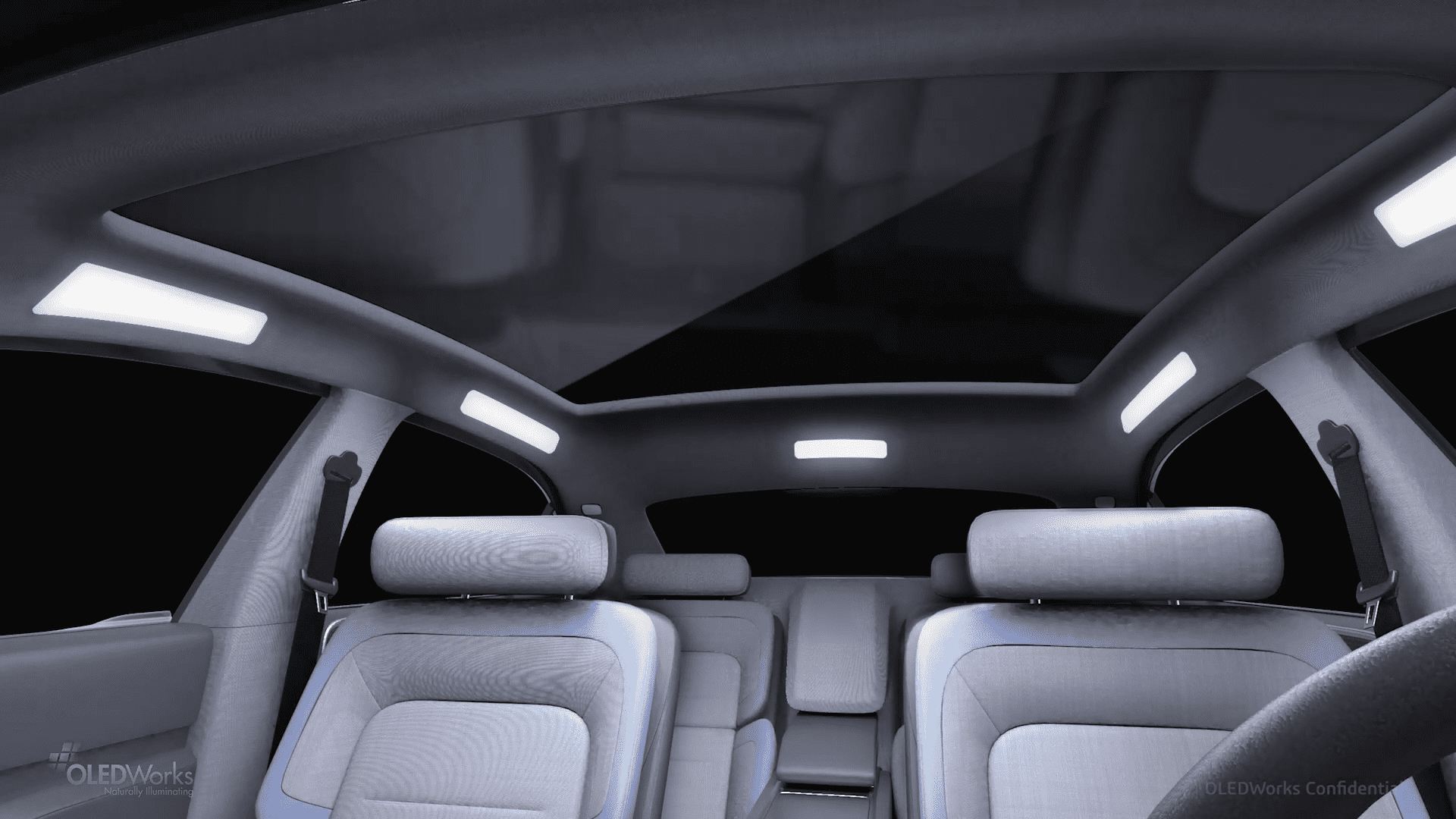
The compact profile of OLED lighting panels also allows easy integration in tight spaces, such as the vehicle ceiling, doors, seats, center console, and foot area. Bendable OLED panels offer a form factor that allows seamless incorporation of light over curved surfaces while maintaining highly uniform, low glare illumination.
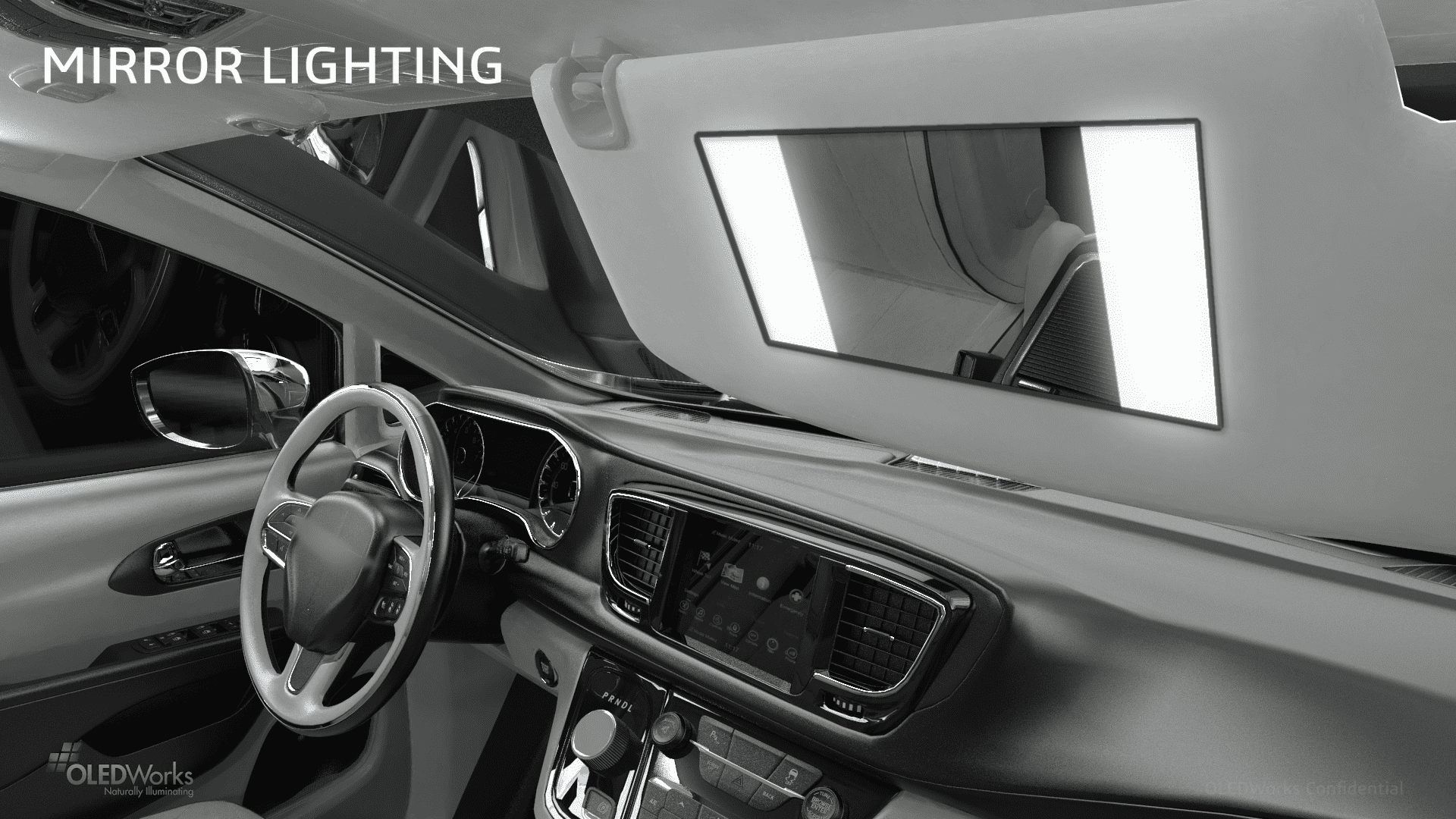
Comfort and Design with OLED Lighting
Ambient interior automotive lighting can also evoke an emotional response from its occupants, playing an important role in the sense of quality, comfort, satisfaction, and pride in vehicle ownership. It is worth noting that many aspects of automotive interior lighting are not regulated, giving auto manufacturers the freedom to explore designs that define and differentiate their brand.
Proper illumination can provide a sense of spaciousness and emphasize luxury by highlighting other design elements and high-quality materials in the interior. As more and more elements are integrated into the vehicle as a system, localized personalization of lighting — from the ability to adjust dimming levels to driver specific hello and goodbye signatures — is also possible. Studies have shown that illumination preferences vary between genders and geographical regions, making this capability particularly important.3
OLED technology will enable this increased emphasis on personalization and branding with ambient vehicle interior lighting systems. The broad surface emission from OLEDs is 1-100% dimmable and results in cool-to-the-touch panel operation making it possible to integrate lighting with more delicate luxury materials, such as wood and leather.
The highly uniform emission and thin panel profile also enable the creation of interesting optical effects through translucent or even cut transparent materials such as crystals and fabric. In addition, the crisp segmentation characteristic of OLED lighting technology opens up opportunities for unique branding and personalization elements within the vehicle, such as mirrors with embedded illuminated logos and animated segmentation of shapes or entire lighted surfaces.
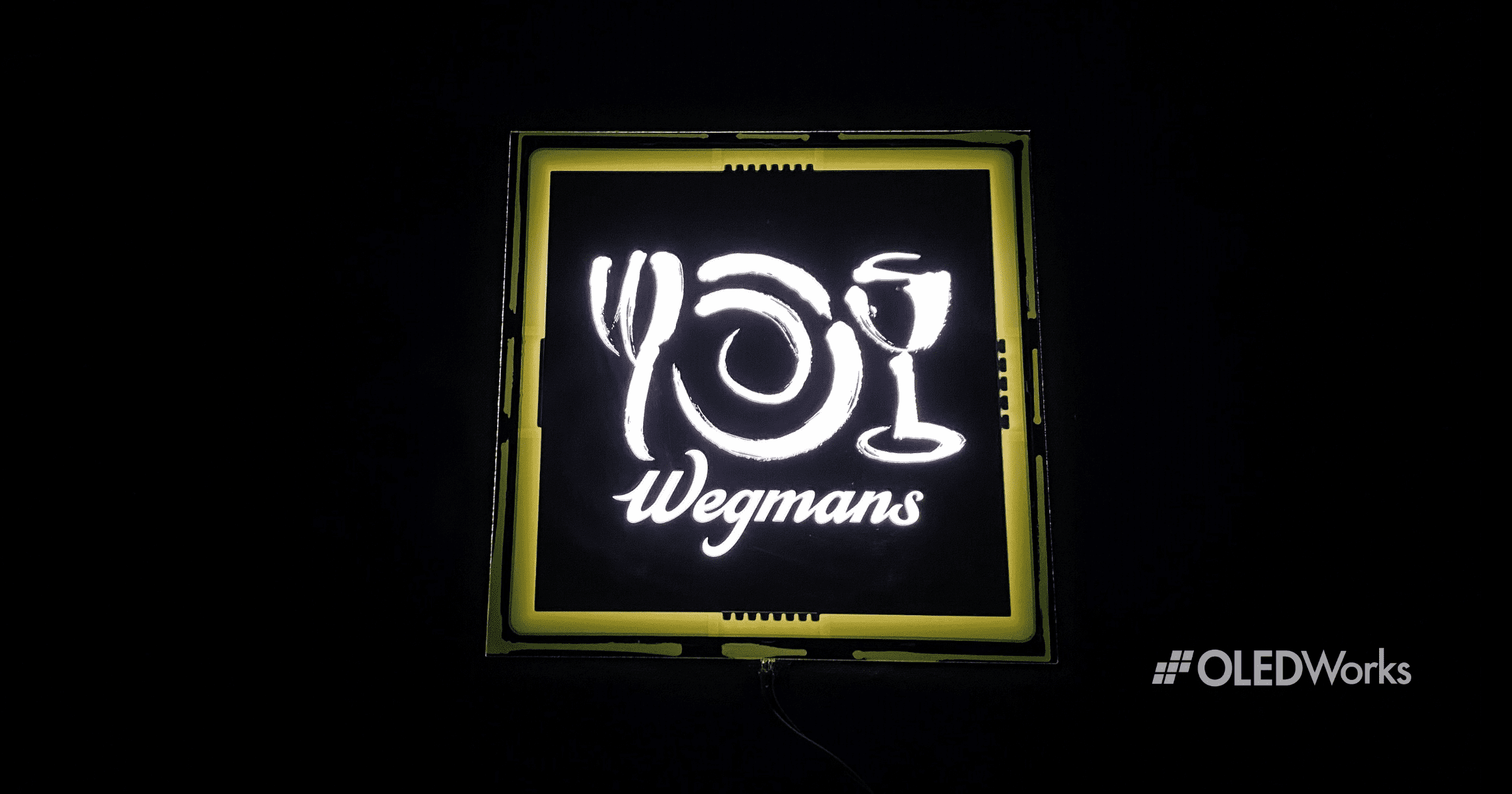
As automakers move to self-driving cars, the approach to interior lighting design will shift even further. Drivers will increasingly become more like passengers, requiring interior spaces to reflect comfort and design qualities comparable to their homes and workspaces. Adjustability and personalization will become even more important, not only for each vehicle occupant, but also for reflecting the mood and activity inside the car.
It is an exciting time for ambient automotive interior lighting design. With increased capability for lighting system controls and the emergence of autonomous vehicles, automakers will have even greater flexibility to put their mark inside the vehicle, incorporating elements that improve driver safety, comfort, and satisfaction. OLED lighting will play an integral role in the coming transformation.
References
- Caberletti L., Elfmann K., Kummel M., Schierz C., “Influence of ambient lighting in a vehicle interior on the driver’s perceptions” Lighting Research & Technology 2010 42 (3) p. 297.
- Francesco, F., Walker, Oliver, O., Morgenstern, Javier, J.M., Avila, Marieke, M.H., Martens and Willem, W.B., Verwey. “A Novel Technique for Faster Responses to Take Over Requests in an Automated Vehicle” In 13th International Conference on Automotive User Interfaces and Interactive Vehicular Applications (AutomotiveUI ’21), September 09-14, 2021, Leeds, United Kingdom. ACM, New York, NY, USA
- Weirich C., Lin Y., Khanh T.Q., “Evidence for Human-Centric In-Vehicle Lighting: Part 1” Applied Sciences 2022 12 (2) p.552.
*This article contains images of illuminated corporate logos as demonstrations of OLED lighting capabilities. Neither OLEDLight.org nor OLEDWorks claim any relationship or affiliation with these companies.

